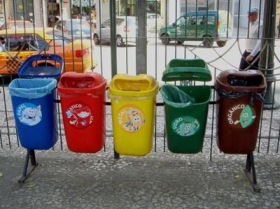inspired by a post from one of my friend in facebook, which was talking about a city from the other side of world named Curitiba, in Brazil, I was suddenly wondering of what happened to Curitiba until finally became what it’s today. I think that this will be something interesting to discuss. and maybe, the idea of what had happen in Curitiba could be implemented to solve a lot of essential issues in Indonesia which is supposed to be our duties, as a future planner-soon-to-be.
well, due to the post from my friend, Curitiba City was the capital city of the State of Paraná, which based on agricultural mechanization from the 1950s to the 1980s, has experienced some of the highest growth in the country with population increases reaching an estimated 5.7% a year during those decades. Curitiba listed as city’s most rundown and most jammed in Brazil in the 1970s. but only within about three decades, believe it or not, Curitiba was awarded the predicate of the most innovative city in the world, in 1996. whereas in 2007, Curitiba came third on the list of the 15 Green Cities in the World in the American magazine Grist. many of municipal governments in various worlds glanced at Curitiba.
with a network of almost 30 parks and urban forested areas, Curitiba is the greenest capital in southern Brazil. the city has succeeded in introducing a Green Exchange employment program to the benefit of the environment and socially deprived groups. low income families living in the favelas, shantytowns out of reach of the city’s dustcarts, can exchange their rubbish bags for bus tickets and food. children can exchange reusable waste with school articles, chocolate, toys and tickets to entertainment events.
the project results in less household waste in the streets as well as in sensitive areas such as rivers and parks. in combination with other initiatives, 70% of Curitiba’s waste is recycled by the city’s inhabitants. the city’s recycling of paper alone accounts for the equivalent of 1,200 trees a day.
the city has a well defined policy and strong commitment towards preserving its woods and parks. in the past 20 years, more than 1.5 million tress have been planted in the city. the ratio of open space to inhabit has increased from 0.5 square metres to 52 square meters which means that Curitiba has one of the highest averages of green space per inhabit among urban areas worldwide.
the Guarda Verde or we may say “the green guard” which was a municipal corporation, protects and maintains the green areas. notes: the guards also keep the public informed about environmental issues and are trained for the first aid. those show us of how to implement the rules while continuously keeping it on guard. a good idea which I believe was suitable if adopted for Indonesia.
Another innovative feature of Curitiba’s green spaces is their integration with food control. the park not only provide recreational and aesthetic value but many have artificial lakes which provide flood control for the entire city. each park is equipped with information centers on the local environment and ecology. a 90-miles (145 kilometres) bike path mostly through the urban parks is nearly complete.
One of the key lessons from Curitiba’s experience is the importance of establishing a close relationship between the public transport system, the land use legislation and the hierarchy of the urban road network. this can provide an integrated framework that can be used as a guidance and development tool.
Finally, I would love to say that Curitiba has give us many things that is worth to be learned. especially for a planner-soon-to-be like me. it’s just an idea of how to represent an excellent and an outstanding mixing between a simple but smart idea with the cooperation among the strong government, private corporations, and the citizens which is had worked very well.
Curitiba has shown that a city with more than 1 million inhabits does not necessarily need a “metro” style underground transport system or a light rail system and that surface solutions based on buses could be developed incrementally at a much lower cost.
The city’s solid waste program has also shown that the recovery from household wastes of recyclable element does not need an expensive mechanical separation plant, if a city transforms every household into a pre-separation plant with curbside collection schemes.
Stephen Leahy, an observer of the environment and agriculture, in his article on the site sustainabletimes, stated that every city, rich or poor, can empower citizens to solve environmental problems. But the first thing that is not easy to do is bring up the motivation to change themselves. Curitiba was able to realize and enjoy it throughout the last 25 years by a political will and strong leadership.
Curitiba has trebled in size in just 25 years and now has a population of 1.6 million. With careful planning and an eye on the future, however, the authorities have created a city that is an inspiration for city planners everywhere.
danke, 😀







I simply place hyperlink of this site on my little Fb Walls. great blog site really.
LikeLike
I would like to grab the ability connected with to thank you for the specialist guidance I have got often liked checking your blog. I will be looking forward to your graduation associated with my own university or college study and the entire placement of feet could not have already been finished without the need of surfing your web blog. Merely could be from a be an aid to other people, I’d personally be ready to assistance as a result of whatever i discovered came from here.
LikeLike
thank you all 🙂 really.. please take your time here 🙂
LikeLike